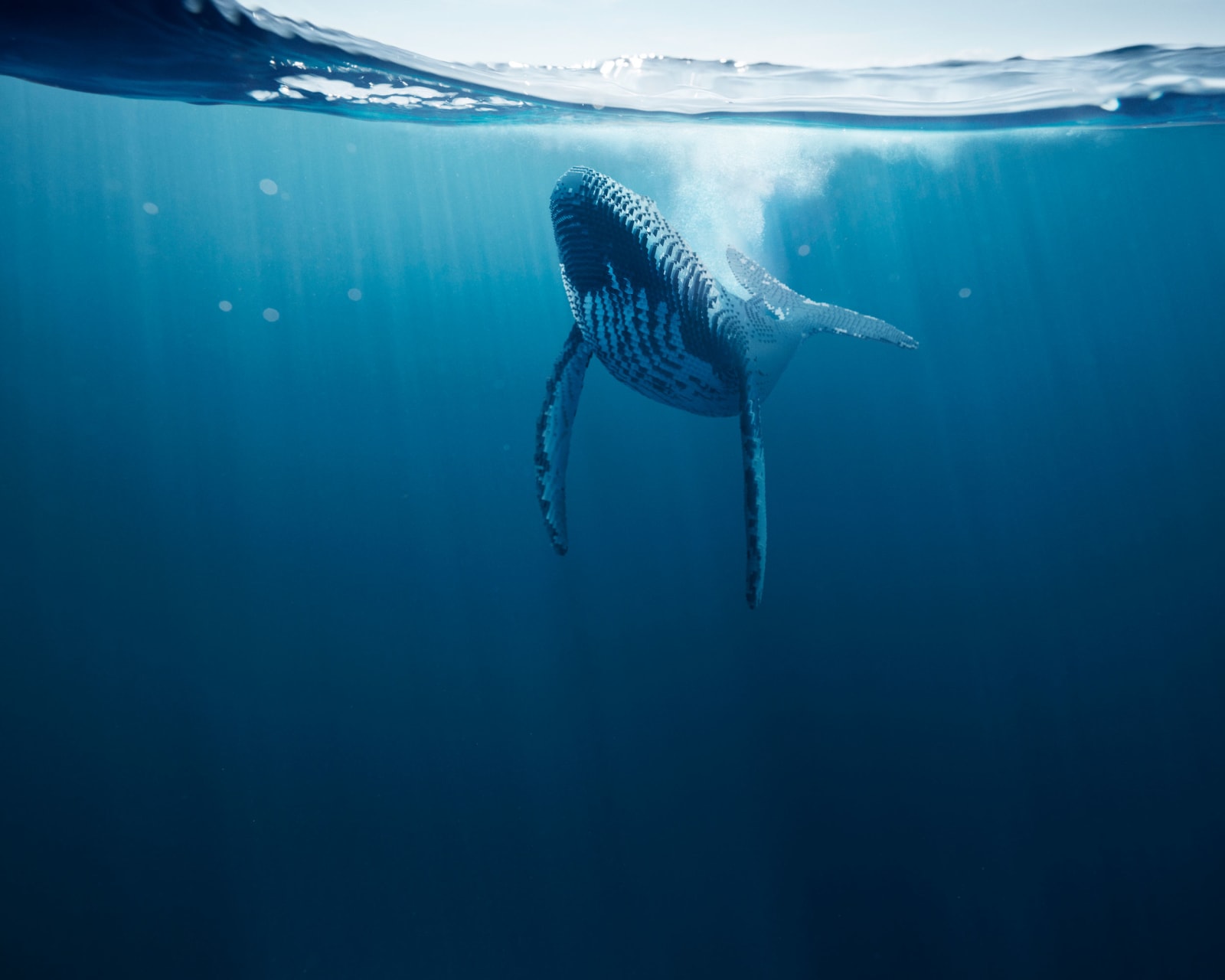Dean West & Nathan Sawaya
38 x 47 1/2 in
48 x 60 in
58 x 72 1/2 in
Further images
Before the 1985 Commercial Whaling Moratorium, Humpback whale populations were depleted by a devastating 95 percent. They were hunted relentlessly, almost to extinction. At one point, intense Soviet whaling on Antarctic feeding grounds slaughtered an average of 27,300 whales over the course of just two summers. The whaling industry as a whole was responsible for the massacre of 2 million baleen whales before the landmark ban.
Today, Humpback numbers are steadily increasing, bouncing back from just 10,000 in the 1970s to 80,000 when reassessed in 2016. Their IUCN Red List status has recently been updated from Endangered to Least Concern. This improvement, although seemingly remarkable, serving as proof that conservation efforts can have monumental results, is still not a cause for celebration.











